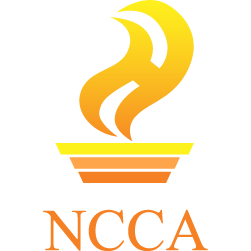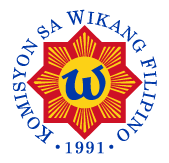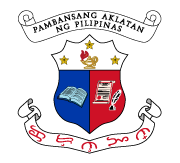TALAPAMANA National and Overseas
TLNO
| OPISYAL NA PANGALAN SA FILIPINO | OFFICIAL FILIPINO NAME | OPISYAL NA PANGALAN SA INGLES | OFFICIAL NAME | KARANIWANG PANGALAN | COMMON NAME | REHIYON | REGION | POOK | LOCATION | LUNGSOD O BAYAN | CITY OR MUNICIPALITY | LALAWIGAN | PROVINCE | DEKLARASYON/PAG-UURI | DECLARATION/CLASSIFICATION | PAGSASALARAWAN | DESCRIPTION |
| Afia-Monarch | Afia-Monarch | Unknown | Work of National Artist for Architecture Juan F. Nakpil | |||||
| Bahay Pinatubo | Pinatubo House | Unknown | Work of National Artist for Architecture Francisco T. Mañosa | Completed in 1992. | ||||
| Chancery ng Pilipinas (Disenyong Pang-interyor) | Philippine Chancery (Interior Design) | N/A | Washington, D.C., United States | Work of National Artist for Architecture Francisco T. Mañosa | Completed in 1993. | |||
| Chancery ng Pilipinas sa Riyadh | Philippine Chancery Riyadh | N/A | Riyadh, Saudi Arabia | Work of National Artist for Architecture Francisco T. Mañosa | Interior Design also by Ar. Mañosa. Completed in 1990. | |||
| Mga Kolonyal na Simbahan and iba pang Bahay Sambahan | Colonial Churches and other Houses of Worship | Nationwide | Nationwide | Nationwide | Classified Historic Structures (as per NHCP Resolution No. 3, s. 1991) | RESOLUTION NO. 1, s. 1991 DECLARING COLONIAL CHURCHES AND OTHER HOUSES OF WORSHIP IN THE PHILIPPINES AS CLASSIFIED HISTORIC STRUCTURES WHEREAS, Article 14, Section 14 of the 1986 Constitution of the Philippines states that “the State shall foster the preservation, enrichment and dynamic evolution of a Filipino National Culture;" WHEREAS, Section 4 of Presidential Decree No. 260, dated August 1, 1973, specifically vested the National Historical Commission, now the National Historical Institute, the power to declare historical and cultural sites and edifices as National Shrines, Monuments, and/or Landmarks which are symbol of our Filipino culture and society; WHEREAS, P.D. No. 260 has declared several Philippine Churches of Spanish vintage as National Landmarks, followed by P.D. No. 375 of January 14, 1974, amending P.D. No. 260, in a process of survey, documentation, research, classification, and marking of said landmarks of great national importance; WHEREAS, the National Historical Institute has established the National Registry of Historic Sites and Structures in order to catalog all the identified and classified sites and structures nationwide; WHEREAS, at present, there exist numerous significant sites and structures, namely vintage churches which are living relics of our religious past, that are still unidentified and unclassified but worthy of inclusion in the National Registry of Historic Sites and Structures and deserving to be protected by the State; WHEREAS, many of these unclassified churches have been either destroyed or demolished, radically altered and arbitrarily desecrated due to various social, economic and environmental factors; WHEREAS, the complex and tedious task involved in the process of identifying and classifying our historical and architectural heritage has, in one way, been attributed to the slow rate of undertaking the inventory of significant churches of historical and cultural values; NOW, THEREFORE, the National Historical Institute, by virtue of the powers vested in it by Presidential Decree No. 260, dated August 1, 1973, hereby declares that existing churches, including ruins, regardless of their religious denominations, which were built were built prior to and in 1940, are hereby automatically categorized as “Classified” structures and/or sites, provided that the requirements in the corresponding guidelines have been met. Approved: October 22, 1991 | ||
| Mga Liwasang Bayan noong Panahon ng Pananakop ng mga Kastila at Amerikano | Spanish and American Colonial Period Plazas and Public Squares | Nationwide | Nationwide | National Historical Site, NHCP | RESOLUTION 7, s. 2018 DECLARING SPANISH AND AMERICAN COLONIAL PERIOD PLAZAS AND PUBLIC SQUARES AS NATIONAL HISTORICAL SITES WHEREAS, the Constitution of the Philippines provides that "The State shall promote and popularize the nation’s historical and cultural heritage and resources;” WHEREAS, the National Historical Commission of the Philippines, by virtue of Republic Act No. 10086, is vested with the power to declare national historical landmarks, sites, shrines, monument, and heritage houses; WHEREAS, in the establishment of towns during the Spanish occupation in the country, King Philip II codified the Las Leyes de las Indias (Laws of the Indies) in 1573, once of the large-scale town planning codices in the world created to guide newly-found colonies of Spain, which was also widely implemented in the Americas and the Philippines; WHEREAS, an integral contribution of these town planning codices is the creation of a central open space called plaza mayor, or main square, where blocks, roads, and streets of the towns form a grid pattern; WHEREAS, throughout the Spanish colonial period, the town plaza was surrounded by important religious and secular buildings, as well as prominent houses which defined the architectural landscape of the towns during the period; WHEREAS, during the American colonial period, more public squares were constructed as open spaces to introduce beautification and monumental grandeur in cities or as central elements in the complex group of government buildings such as the municipal/city hall, capitol building, courthouse, jail, and/or school, with fountains, ponds, bandstands, walkways, and other similar improvements; WHEREAS, these plazas continue to serve as open spaces for the people to congregate, and participate in public activities that made impact in the history of town and cities; WHEREAS, beyond heritage, public plazas serve as greeneries, gardens, and breathing spaces for the community amidst current environmental issues like global warming and urban pollution; NOW THEREFORE, given the importance of plazas as historical open spaces and the urgent need for its preservation and protection, the National Historical Commission of the Philippines hereby declares all Spanish and American colonial period plazas and public squares in the Philippines (1581-1946) as National Historical Sites, and thereby subject to pertinent guidelines as promulgated by the NHCP. Approved in the NHCP Board Meeting dated 16 August 2018. | |||
| Mga Modelo ng Bahay - Bahay Para sa Kinabukasan, Bayanihan at PNP | Bahay Para sa Kinabukasan, Bayanihan and PNP Models | Unknown | Work of National Artist for Architecture Francisco T. Mañosa | |||||
| Mga set para sa iba't ibang ballet ni Ricardo Cassell | Sets for various ballet by Ricardo Cassell | Unknown | Work of National Artist for Architecture Leandro V. Locsin | |||||
| Paghahabi | Philippine Backstrap Weaving | Nationwide | Nationwide | Philippine Intangible Cultural Heritage Inventory | People in the interior of the Philippines, like other ancient peoples during the late Neolithic Age, use a simple apparatus in weaving textiles – the back-strap loom. Even today, the back-strap is till in use notably in the island of Mindanao and the Cordilleras of northern Luzon to produce the very colorful and intricately designed textiles that identify the ethnicity of different people. Some of the people that use this are the Ifugao, Bontoc, Itned, Ilianon, Yakan, Mandaya, Mansaka, Maranao, T’boli, Bagobo, Manobo and B’laan. _____ Inventory No.: 298 ICH Domain: 5 Ethnolingustic Group: Countrywide | |||
| Palatandaang Makasaysayan ng Lumang Chancery ng Pasuguan ng Republika ng Pilipinas sa Estados Unidos | Old Chancery of the Embassy of the Republic of the Philippines in the United States Historical Landmark | Embassy of the Philippines Consular Section | N/A | 1617 Massachusetts Avenue NW, Washington, D.C., United States | National Historical Landmark, NHCP | Marker Text: Old Chancery of the Embassy of the Republic of the Philippines in the United States Constructed according to the plans of Architect Appleton Prentis Clark, Jr. as the residence of Linda M. Hutchinson-Webb and family, 1913-1916, and of Daniel and Stella Stapleton, 1917-1941. Purchased by the Philippine Commonwealth Government to serve as Office of the Resident Commissioner through the efforts of Joaquin Elizalde, 1941-1946. Functioned as the Office of Special Services and Department of Information and Public Relations of the Commonweath Government during the Second World War, 1943-1946. Served as the Chancery of the Embassy of the Republic of the Philippines, 1946-1995. Renovated and became an annex to the Chancery of the Philippine Embassy, 2016. Declared as National Historical Landmark, 16 April 2018. Year Unveiled: November 9, 2018 | ||
| Palatandaang Pangkasaysayan ng Pasuguan ng Pilipinas, Tokyo | Embassy of the Philippines Tokyo Historical Landmark | Philippine Ambassador’s Residence Tokyo | フィリピン 共和国 大使館 | N/A | Fujimi, Chiyodaku, Tokyo, Japan | National Historical Landmark, NHCP | Marker Texts: Embahada ng Pilipinas Fujimi, Chiyoda-Ku, Tokyo Ipinahayag bilang Pambansang Palatandaang Pangkasaysayan sa bisa ng Resolusyon Blg. 1 ng Pambansang Komisyong Pangkasaysayan ng Pilipinas, 11 Marso 2013. Date Unveiled: March 3, 2014 _____ Embassy of the Philippines Tokyo This building, dating from the Tokugawa Shogunate, was purchased for the Philippines on 31 March 1944 by President Jose P. Laurel of the Second Philippine Republic. Tokyo, March 9, 1962 Date Unveiled: March 9, 1962 | ||
| Tahanan ng Embahador ng Pilipinas sa Riyadh | Philippine Ambassador’s Residence Riyadh | N/A | Riyadh, Saudi Arabia | Work of National Artist for Architecture Francisco T. Mañosa | Completed in 2004. | |||
| Zarzuela (Dramatikong Liriko) | Zarzuela (Lyric Drama) | Sarsuela; Zarzuela | Nationwide | Manila, Iloilo, Cebu, Pampanga, Bicol | Metro Manila; Iloilo; Cebu; Pampanga; Albay; Camarines Norte; Camarines Sur; Catanduanes; Masbate; Sorsogon | Philippine Intangible Cultural Heritage Inventory | This is now rarely performed in modern times having been relegated to semi-obscurity except as a cultural piece showcase. _____ Inventory No.: 187 ICH Domain: 2 Ethnolingustic Group: Countrywide | |
| 1. Pansekondarya na Bangang Panglibing mula sa Manunggul 2. Palayok Pangritwal mula sa Calatagan 3. Hugis-tao na Palayok mula sa Maitum 4. Hugis-kwadrado na Bangang Panglibing mula sa Maitum 5. Maliit na Garapon mula sa Leta-leta na tila’y Humihigab na Bunganga 6. Tasang tila Tangkay mula sa Leta-leta 7. Maliit na Garapong may Paa mula sa Leta-leta 8. Platong Panhandog mula sa Leta-leta 9. Palayok na gawa sa Putik na may Takip at Disenyo 10. Plorerang noong panahon ng Dinastyang Yuan 11. Sarong mula sa Butuan na may Ulo ng Phoenix at Puti ang Kinang 12. Mangkok na Porselanang Bughaw at Puti noong 14-daantaon mula sa Pandanan 13. Platong Bughaw at Puti na may Lumilipad na Elepante mula sa Lena Shoal 14. Palayok na Bughaw at Puti mula sa Puerto Galera 15. Palayok na Celadon mula sa Marinduque 16. Tunawan ng bakal mula sa Butuan 17. Palawit sa Tainga na Hugis-Hayop mula sa Palawan 18. Palawit sa Tainga na Ling-ling-o na Neprit mula sa Palawan 19. Pinakamatandang Kagamitang Pangtuklap mula sa Cabalwan 20. Mga Pigurin na Likha mula sa Batangas 21. Kabibeng Pangsalok mula sa Mataas 22. Palakol na Kabibe mula sa Duyong 23. Bungo mula sa Tabon 24. Kanang Mandible mula sa Tabon 25. Bahagi ng Lulod mula sa tabon 26. Bungo mula sa Bolinao na may Palamuting Ginto sa mga Harapang Ngipin 27. Tatak na Ginto ni Gobernador Heneral Antonio Morga 28. Gintong Maskarang Pampatay mula sa Oton 29. Copper Plate mula sa Laguna 30. Astrolyabyang Tanso mula sa San Diego 31. Kasuotang Panglibing mula sa Banton | 1. Manunggul Secondary Burial Jar 2. Calatagan Ritual Pot 3. Maitum Anthropomorphic Pot 4. Maitum Quadrangula Burial Jar 5. Leta-leta Jarlet With Yawning Mouth 6. Leta-leta Stem Cup 7. Leta-leta Footed Jarlet 8. Leta-leta Presentation Dish 9. Earthenware Jar With Cover and Design 10. Yuan Dynasty Vase 11. Butuan White-glazed Ewer With Phoenix Head 12. Pandanan 14th Century Blue and White Porcelain Bowl 13. Lena Shoal Blue and White Dish With Flying Elephant 14. Puerto Galera Blue and White Jar 15. Marinduque Celadon Jar 16. Butuan Crucible 17. Palawan Zoomorphic Ear Pendant 18. Palawan Nephrite Ling-ling-o Ear Pendant 19. Cabalwan Earliest Flake Tools (2) 20. Batangas Likha Figurines (4) 21. Mataas Shell Scoop 22. Duyong Shell Adze 23. Tabon Skull Cap 24. Tabon Right Mandible 25. Tabon Tibia Fragment 26. Bolinao Skull With Gold Ornaments on the Frontal Teeth 27. Gold Seal of Governor General Antonio Morga 28. Oton Gold Death Mask 29. Butuan Silver Paleograph 30. Laguna Copper Plate 31. San Diego Bronze Astrolabe 32. Banton Burial Cloth | N/A | National Cultural Treasure, National Museum | Laguna Copperplate Inscription – it was reported that the plate was discovered in the delta of the Pangasinan River in Laguna Province in 1986. The area is known as ancient grave site where gold ornaments, stone tools, bronze images porcelains, potteries and other artifacts were found. It is a thin copper plate with ten lines of small script characters that are impressed on one side. This rare artifact was studied by Dr. Antoon Postma and Dr. Johannes de Casparis. According to them, the main language of the copper plate is an old Malay but the text is sprinkled with Sanskrit, old Javanese and old Tagalog terms. Flying Elephant Porcelain Dish – one of the only two pieces recovered in the world, the Elephant Dish is made of porcelain with black and brown specks visible in the paste. On the central medallion is the flying elephant design painted in dark blue against a background of stormy and foaming waves. This is a rare representation of an elephant in early historic art. Lotus scrolls with pointed leaves and a classical scroll designs are on the cavetto and rim. On the reverse side are lotus scroll between two blue lines and little clouds on the rim. The foot is surrounded by two dark cobalt blue line designs. The base is flat and unglazed with radial and circular lines. De Morga’s Gold Seal – collected by underwater archaeologists at the San Diego Wreck Site off the Fortune Island, Nasugbu, Batangas. This gold seal is oval on which aheraldic devise has been engraved in the negative. A thick collar is fused onto the plate. It is unique and the only one in the world. Bronze Astrolabe – the astrolabe consists of a bronze disc, a ring at the top by which they are suspended, and a counter weight of the bottom to stabilize them. At the center of the disc, there is a pivoting pointer, alidade, which is equipped with two plates or sight pieced by a hole. This one of the two known existing astrolabe in the world. Calatagan Vessel with Syllabic Script – Earthenware with Tagalog writing inscribed around the shoulder excavated in Calatagan, Batangas; associated with the 15th-16th century trade wares from South China and Thailand. This is one of the objects from a pre-Spanish archaeological site with syllabic writing, which shows that the Filipinos were literate long before their contact with the Western World. Yuan Underglaze Red Vase – underglaze and red glaze with a poem inscribed in Chinese calligraphy, recovered from Northeastern Mindanao, Southern Philippines. This is the second of only two Yuan pieces inscribed with a poem; the other specimen is with the British Museum. Tabon Flake Tools – the stone tools were recovered in the old stone stage layer in the tabon cave by Dr. Robert Fox in 1962. Made from chert, these tools were associated with the earliest human remains so far recovered in the Philippines. During the Paleolithic Period, flake tools were produced by a percussion technique in which stone hammer was used to strike the core. These flake tools served as knives, scrapers and other cutting implements. Most of the flake tools recovered in Tabon Cave were made from highly-selected stone materials like chert, a hard cryptocrystalline quartz. Tabon Mandible – the earliest evidence of human remains showing archaic characteristics of the mandible and teeth dating back to about 30,000 years ago. Tabon Tibla – the bone was recovered at Tabon Cave during the re-excavationof the said cave in 2000 by Mr. Alfredo B. Orogo, archaeologist of the National Museum. The bone was identified as human by the zooarchaeologist of the NM, Mr. Angel P. Bautista and was sent to National Museum of Natural History in Paris, France for more detailed study. Accelerated carbon dating technique was applied to this bone that revealed a dating of 47,000 =-/11,000 years ago. At present, this is the earliest human remain belonging to modern man, Homo sapiens sapiens. Manunggul Shell Scoop – at the early phase of Philippine Prehistory, early inhabitants in the Quezon area did not only use mollusks as source of food. The protective shells of mollusks were also utilized as raw materials in the manufacture of utensils or implements. This was made possible by the development of human skills such as sawing, drilling and polishing the shells about 3,000 years ago. Taken from a turbine shell, the Manunggul shell spoon is a concave utensil with a sharp point at one end and a figure at the other end. The latter has a right extremity that forms to what appears and the head are missing. The outer surface of the body whorl near the figure has an angular shoulder. Shell Adze – manufactured from the hinge line of giant clam (tridacna gigas), the shell adze was found associated with a Neolithic burial assemblage in Duyong Cave, Quezon, Palawan. This shell tool is similar to the shell adzes recovered in Micronesia and Ryuku Islands in Okinawa, Japan. Shells were used as tools in the Pacific as a replacement for hard stones which were not available on the islands. The presence of shell adzes not only in Palawan but also in Tawi-Tawi is very significant in the study of movements of people from the insular Southeast Asia to the Pacific. Used as implement during the Neolithic of the Philippines, the shell adze could be the prototype of shell adzes found in the Pacific. Leta-Leta Jarlet with Yawning Mouth – the jarlet is one of the several pieces of pottery recovered by Dr. Robert Fox during his explanatory work in Leta-Leta Cave, Northern Palawan in 1965. It is an anthropomorphic vessel depicting a yawning mouth. The jarlet is unique and earliest pot recovered in the Philippines. Maitum Anthropomorphic Burial Jar – the burial jar was recovered in Ayub Cave, Pinol, Maitum, Sarangani Province. Inside the jar are tiny bone fragments and deciduous human tooth indicating that the jar was used for the burial of a young individual. Unique in being the only intact anthropomorphic burial jar with two arms, nipples, navel and a figure of male sex organ on the body found in an archaeological context. The head is unpainted and with perforations on the lid that show side parting of the hair. Its lips are colored with red hematite and accented with an incised design. It has also two ear lugs on the lower half on the urn. Maitum non-Anthropomorphic Burial Jar – this is a quadrangular jar with four ear lugs on the body and intricate scroll design emanating from a single trunk. The cover of the burial jar has a crown-like embellishment on top like birds’ head coming together. This jar has curvilinear scroll designs such as free hand painting of Tree of Life and cloud motifs. This is the earliest record of cloudf design on pottery. Earthenware Jar with Cover and Design – the jar is unique with incised decoration. The design is more free-flowng that involved scroll and geometric designs on the cover and body. Lingling-O – the Lingling-O is the diagnostic ornament of the Early Metal age in the Palawan. Several ear pendants were found in Uyaw, Rito-Fabian and Duyong Caves in Palawan by Dr. Robert Fox in the 1960’s. these distinctive ear pendants appeared for the first time in the Early Metal Age. In the later periods, archaeological records reveal that the pendants were duplicated in stone and shell. The projection of the linglling-O ear pendants appears to have been derived from the stylized bud design resulting in a simple point with concave side. Another type of lingling-O is the double-headed pendant found in Duyong Cave. This is the most distinctive jade ornament with zoomorphic design; and a superb and beautifully proportioned example of an ancient carving jade. Bolinao Gold Skull – One of the significant information gathered in the archaeological excavation of Balingasay Site, Bolinao, Pangasinan s the beautiful and ornate method of decorating the teeth with gold. In this site, teeth with gold ornaments were found in 67 skulls that were associated with tradeware ceramics attributed to Early Ming Dynasty (ca. 15th century A.D.). One of the skulls is the renowned Bolinao skull where gold scales were observed on the buccal surfaces of the upper and lower incisors and canines. The gold decorations on the teeth are like tiny nails with flat rounded tops or heads and placed in a bored hole on the teeth, overlapping one another, like fish scales. The dental ornamentation consists of pegging with gold plates in fish scale design or pattern and pegged with gold wire rivets. Oton Gold Death Mask – collected in Oton, Ilo-ilo, this is the first gold death mask recovered systematically by archaeologists, a rare piece. Banton Cloth – two pieces of Banton cloth were found associated with coffin burial by Filipino archaeologist, Mr. Alfredo P. Evangelista during his exploratory work in Banton Island, Romblon Province. This is the oldest textile associated with Yuan ceramic tradeware. | ||||








